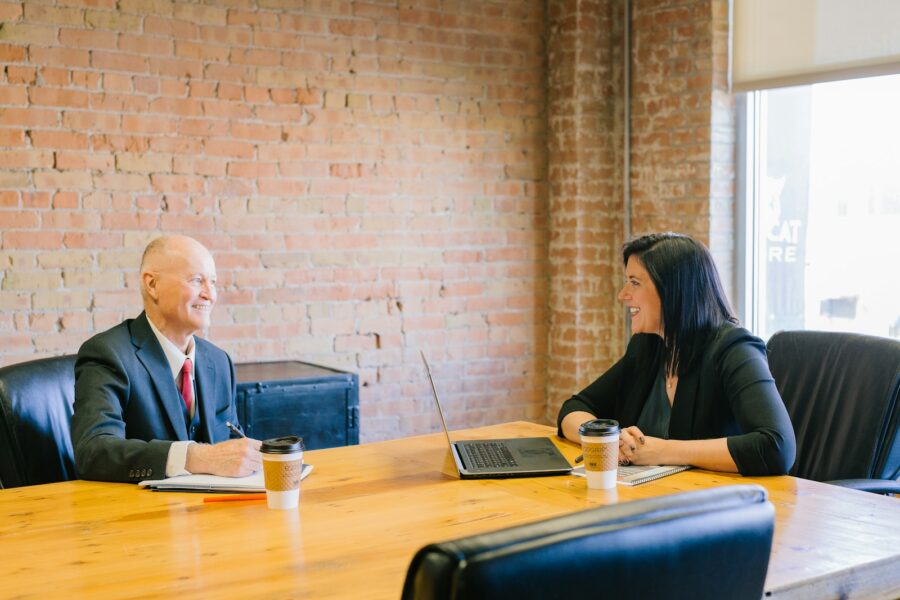The modern workplace is more diverse than ever, with up to four generations collaborating under one roof (or remote roof). While this multigenerational workplace brings valuable experience and fresh perspectives, it also presents unique challenges in fostering effective communication and mitigating conflicts.
The generation gap feels particularly large these days, strengthened by economics, politics, technology, and the impact of hybrid working. The traditional workplace model of trickle-down knowledge is being disrupted; young people hold tech skills they should teach their elders, and older workers retain essential soft skills that younger colleagues need to master. Navigating these generational differences is crucial for maintaining a harmonious and productive work environment.
A recent study by The Adaptavist Group sheds light on the scope of these generational communication challenges. The Digital Etiquette report surveyed 4,000 global knowledge workers, revealing that 79% experience communication conflicts across generations, from misinterpreted tone to emoji confusion. Moreover, 90% of teams have had a conflict over digital tools, with Generation Z leading in tool-related skirmishes at 93%. Perhaps most concerningly, only 12% of Generation Z say they communicate clearly at work when collaborating with other generations.
These stats highlight the pressing need for leaders to address generational communication gaps proactively. But where do you start?
Understand generational analysis
The first step is to understand generational analysis. This is not about building stereotypes around certain age groups, but understanding how different generations tend to see work, tech, and culture. Baby Boomers, for example, are an exceptional generation, a product of unique post-war circumstances. Generation X witnessed huge technological upheaval; they went from the Walkman to the Blackberry and have had to adapt to innovation ever since. Millennials were guinea pigs for massive changes, including expanding university education and turbocharging the knowledge economy. Generation Z, true digital natives, are the first cohort to be genuinely global. The key is to educate, understand, and empathise with others who have lived in different times, adjusting our perspective to incorporate theirs. It’s not about boxing people into generational categories but recognising areas of difference and igniting a conversation.
Open dialogue and digital communications
We need to make the workplace more human, tolerant of differences, and open up conversations. Encourage younger employees to ask their older colleagues about their work experiences at a similar age, to observe their skills in action, and to seek advice. Likewise, prompt older workers to ask younger team members for their thoughts, the information they need, and check in on their wellbeing. This is especially important considering that 43% of knowledge workers struggle with misinterpretations of tone or context when digitally communicating with their teammates today. As teams increasingly rely on tech tools for communication and collaboration, a staggering number of knowledge workers admitted to conflicts arising from their use. To mitigate these issues, developing a set of clear guidelines outlining expectations for digital communication is helpful. This should cover aspects like response time expectations, preferred communication channels, and appropriate tone and style. Importantly, these guidelines must be clearly communicated to all employees and regularly reinforced.
Reverse mentoring and skill-swapping
Formalising a reverse mentoring scheme, where younger colleagues are matched with older ones, is a powerful way to foster intergenerational dialogue and learning. Shared knowledge and mutual learning flatten age hierarchies and breed mutual respect. The bigger the age gap (aim for over 12 years), the more rewarding and reciprocated the mentoring relationship. Skill-swapping initiatives are another effective approach. For instance, 51% of Generation Z respondents admire their older colleagues’ phone confidence, while much of Generation Z is racked with ‘phone phobia.’ Baby Boomers can help Generation Z learn telephone etiquette with clients, while Generation Z can teach Baby Boomers the importance of social media and being a public ambassador for the company on online platforms.
Training for the digital divide
With 9 in 10 teams experiencing conflicts over digital tools, investing in comprehensive training is a must. This is especially critical for remote workers, as just 73% of home workers have received AI training compared to 98% of office professionals. Consider offering workshops, online tutorials, or even cross-generational mentorship programmes to bridge the digital skills gap. This training is crucial as AI usage skyrockets at an unprecedented pace. Generation Z uses AI more than any other tool at 32%. However, 65% of knowledge workers fear AI may exacerbate existing divides, highlighting the need for companies to foster human connections around the tech and mutual understanding of its application and workforce impact.
Embracing generational diversity for business success
Ultimately, bridging generational communication gaps requires a foundation of empathy, open-mindedness, and mutual respect. As a leader, it’s critical to model these inclusive behaviours in your own communication and collaboration style. Encourage all employees to approach generational differences with curiosity rather than judgement. Promote a culture that truly values diverse perspectives and generational variety as a strength. As the workforce continues to evolve, generational diversity will only increase. By taking proactive steps to understand generational contexts, open dialogues, implement reverse mentoring and skill-swapping, interrogate practices, and adapt our organisational culture, we can transform our multigenerational teams into our greatest asset. We all have something to learn from each other, which is the easiest way of ridding workplaces of the prevailing and corrosive culture of age stereotypes and ageism. Investing in bridging the generational divide isn’t just good for employee wellbeing, it’s essential for thriving in an age-diverse world of work.
Isobel McWilliams
Isobel McWilliams is the Head of HR at Adaptavist, where she leads a centre of excellence with subject matter experts in benefits, employee relations, partnering, compliance, HR processes, global mobility, mediation, and resolution. Isobel is a CIPD-certified professional with over 30 years of experience in senior HR roles across multiple sectors and geographies.



